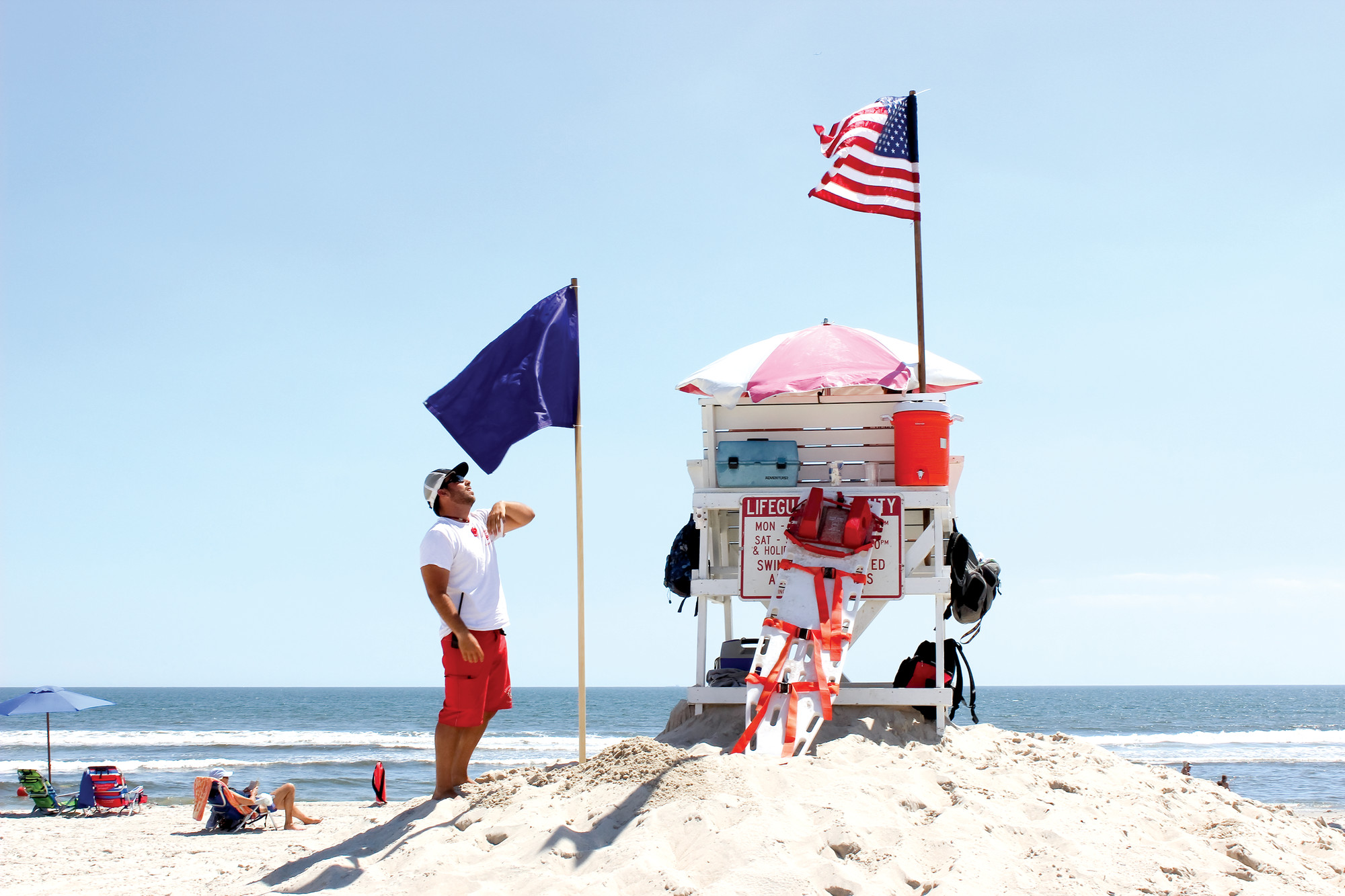Protecting people and preserving marine life
Atlantic Beach lifeguard precautions reduce risk of harm
Atlantic Beach lifeguards spotted a potential hazard in the water in June — a Portuguese Man o’ War — which resembles a jellyfish but is a colony of organisms equipped with stinging barbers that can be fatal if they come into contact with human skin and release venom, and since then precautions have been taken to safeguard swimmers and minimize contact between people and this venomous animal.
After Atlantic Beach’s chief lifeguard John Madden was informed about the danger he alerted the people on the beach. Madden then conducted research to learn what other such communities do in a similar situation.
“We copied what ocean communities down south do in these situations,” he said. “They use a purple or blue flag to indicate hazardous ocean conditions. The purple flag in particular indicates hazardous marine life.”
Should a beachgoer be stung, there is also a medical plan in place. “We as lifeguards collaborated with North Shore-LIJ and Atlantic Beach Rescue Squad to learn how to treat stings,” Madden said. “Luckily, nobody has been hurt here. With the flags, we let the people know what the risk for swimming is.”
Town of Hempstead Conservation officer John Zarudsky said that the manner in which Atlantic Beach’s lifeguards are handling the situation works best for everyone. “To remove the Man o’ War could put it at risk for exposing more people to harm than by leaving it in its place in the water and alerting people to just stay away from it,” he said. “Don’t handle the stinging cells when you see them. When they wash in with the tides, let the Man o’ Wars wash back out. The stingers are potent, and carry the worst type of toxins.”
The alert system is used at all of the eight beaches of Atlantic Beach, altogether, comprise just over one mile of the barrier island. Each one is private, and residents and their immediate guests are allowed to use them. A few hundred people visit these beaches during the week, and during the weekend the beach population ranges from 1,000 to 5,000 people.
Madden said he wasn’t surprised to see the Man o’ War, as he described the water by Atlantic Beach as being located near a “fish highway,” where many different marine animals pass through. In his 15 years working with the lifeguard department, he’s seen cleaner waters and a variety of ocean life, including dolphins and the occasional shark.
Gabby Jan of Inwood frequents Atlantic Beach as a surfing enthusiast who said she feels safe at the beaches of Atlantic Beach.
“I know my limits as a swimmer and surfer,” she said. “I know what I’m doing in the ocean. But other people will less knowledge of the ocean should be scared. We are invading their [ocean wildlife’s] territory. I know the way the current is going, how to recognize if there is a rip tide, and how to get out of one. If someone is going to go out onto a sandbar, it would be helpful to know how to swim. Staying close to a life guard is important, too.”
Carina Kohn contributed to this story.

 60.0°,
Mostly Cloudy
60.0°,
Mostly Cloudy 







